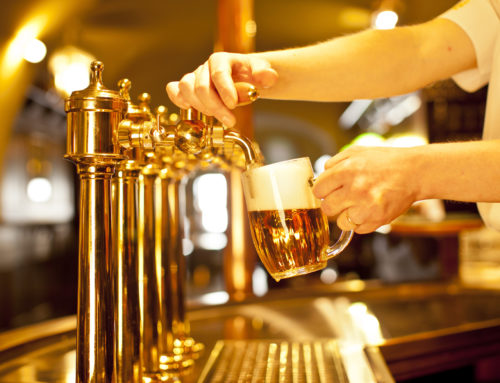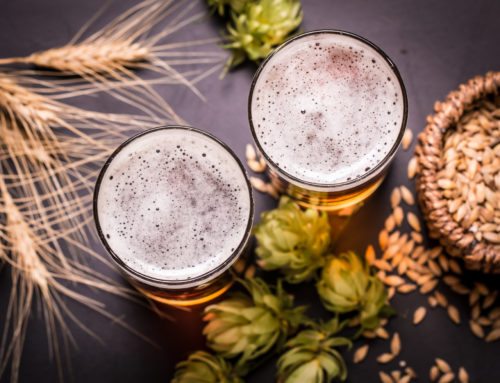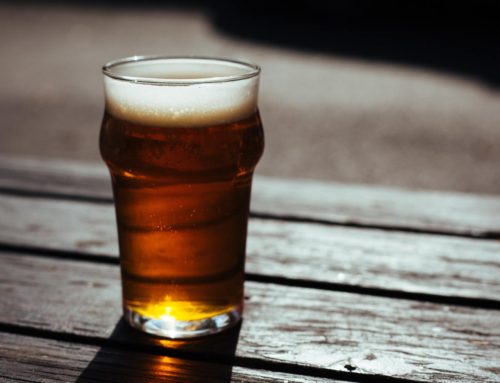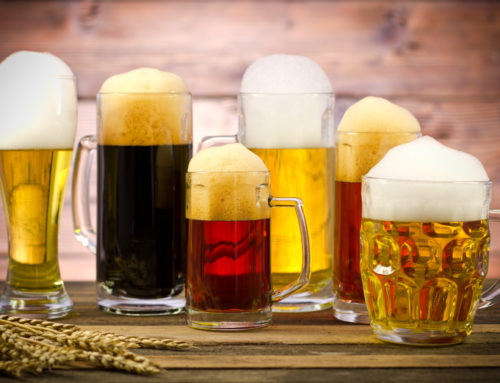Originally dubbed “boutique” beers or “microbrews.” Craft beer has come a long way since it gained mainstream attention in the 1970s. And the industry continues to brew its way into the hearts — and bellies — of beer enthusiasts everywhere. More popular than ever, there are over 5,300 craft breweries in the United States.
Attempts from “big beer” giants to silence the growing competition by buying them out are in vain. Craft brewers remain strong, independent and on the cutting-edge of craft beer trends. Wielding more influence throughout the beer brewing industry, craft beer makers are trendsetters.
Here are 10 craft beer trends expected to continue in 2017.
10) “Where everybody knows your nay-ay-ame”
Cliff Clavin, Sam, Woody, and “Norm!” were definitely on to something. A neighborhood bar with regular clientele is now the standard in the craft brew industry.
This Brewers Association website documents this trend. There is a craft brewery within a ten-mile radius of most American homes. It used to be that if you craved a specialty beer you had to head to the city. Now, breweries and taprooms are sprouting up in the suburbs.
Keeping with the local scene has evolved. It requires more than being in an easy-to-get-to location or up and coming neighborhood. How are brewers building brand awareness and securing customer loyalty? These small and independent brewers are getting involved.
Event sponsorship and philanthropic ventures top our craft beer trends list. This is simply because they are great community-building endeavors. Plus, with advances in technology, serving portable draft beer is easier than ever.
Investing time, money and product in the local community is an invaluable marketing solution. Everyone involved wins. Don’t think it’s a thing? One state recently instituted a charitable donation law for breweries. The bill allows breweries to “donate beer brewed at its facility” to non-profit organization special events.
Who wouldn’t remember the brewery that offered free suds in the beer garden after completing a grueling 5k?
9) Farm-to- Table Bottle
Another progressive movement in craft beer trends takes its lead from independent restaurateurs. Within the culinary world, the farm-to-table platitude may seem a bit cliché, but craft brewers are not shying away.
And they shouldn’t.
Many independent breweries now source ingredients from local farms. This accomplishes to important things. First, it promotes sustainability practices. The second is a much sought after advantage. Using local ingredients creates a regional uniqueness in the flavor profile.
As the craft brew industry continues to boom, the competition grows too. Brew outfits constantly search for innovative tactics to develop tastes competitors cannot imitate.
In fact, craft beer trends aren’t stopping at the bottle. Farm-to-keg anyone?
Yes. Brewers are going straight to the source. And they are tapping kegs right in their new backyard. By “purchasing or leasing farmland to produce their own hops and barley” brewers can harvest, brew and sell all in one place.
Coined “farmstead brewing,” this forward-thinking strategy in craft beer trends is gaining interest. Growing their own fresh ingredients allows beer operations to create masterful brews. Each batch captures the subtle differences present in each individual harvest.
Gives a whole new meaning to the term local flavor.
8) Crafty Cuisine
Beer goes with . . . uh . . . food.
Like wine, different types of food bring out subtle notes that define an individual craft beer. Correct pairing allows these nuances to shine.
Many brewpubs are taking cues from the wine industry by offering suggestions from the tap for individual items on their menus. In fact, craft beers are being developed specifically to complement certain foods.
Motivation to find craft beer trends the wine industry cannot duplicate is high. The limited ingredients available to the wine industry force food to come to the wine. Sophisticated brewers are now tailoring their beer to match a variety of cuisines. In some cases, brewers experiment with ingredients to create a beer for a specific menu item.
Although not as exact as choosing beer-food combos based on flavors, a good way to begin with pairings is by color:
- Pair spicy foods with light colored beers
- Serve lighter foods like salads, chicken, and fish alongside light beer
- Shellfish (lobster, crab, scallops) taste better when served with light beers
- Pair beef and barbecue with amber to light brown beers
- Desserts pop when accompanied by dark porters or stouts
Some craft beer trends have a flip-side. Pair beers with food? Great. Cook with beer? Excellent.
The recent popularity of creative craft beers may revolutionize the art of cooking with beer. (That’s using beer as an ingredient, not sipping while flipping burgers.) The hint of herbs and spices or a gentle citrus note act as seasonings which round out a recipe.
7) Sour is the New Sweet (spot)
If life gives you lemons, why not make sour beer?
Sour is more of a beer style than a description of the taste. And craft beer drinkers from new converts to the cicerone-like aficionado are sweetening up to tart creations.
Most sours lean toward tart (reminiscent of a cider), rather than packing a pucker. Adding Lactobacillus bacteria or wild yeast during fermentation creates a deliberate sourness in these wheat-based beers.
A bacteria or yeast-induced haze is commonly accepted for the clarity of a sour beer.
To add another level of complexity to the drink, brew masters are venturing to the produce aisle. The mild acidity of a sour beer offers an open playground for the addition of all types of ingredients. Top choices: strawberry, raspberry, boysenberry, passion fruit, and blood orange. And don’t forget about cucumber lime, of course.
Want to create an over-the-top brew? Try blending a Belgian-style fruit lambic using one of the choices above.
But crafty brewers are not stopping there. The biggest breakout sub-style carrying over from 2016: the dry-hopped sour.
One in a series of craft beer trends focusing on trying new things.
6) Time to Experiment: Break Out the Beakers
The word on the street: “new” is a leader in craft beer trends.
Craft beer drinkers want variety. They are always on the lookout for the latest concoction. And more than willing to stray from their favorite go-to brew. A Nielsen poll aimed at the craft beer purchasing habits of millennials found that the average craft beer drinker buys 4 different brands per month. 15 percent purchase 10 or more brands in a month.
Craft brewing is about being bold. It’s about being willing to experiment with new techniques. Developing new, complex flavor profiles defines what craft brewing is all about. And as far as craft beer trends go, nothing is seemingly taboo when it comes to experimentation.
Check out this list of specialty brews that put Dr. Frankenstein to shame:
- Funky Buddha’s Maple Bacon Coffee Porter
- Blue Point’s Beach Plum Gose (contains — wait for it — seaweed)
- Scratch Brewing’s mushroom-filled Oyster Weiss
- Casey Brewing’s Elephant Heart Plum American Wild Ale
- Sierra Nevada Brewing Co.’s Dry-Hopped Berliner-Style Weisse
- Willoughby Brewing Company’s Peanut Butter Cup Coffee Porter
- Trinity Brew’s Elektrick Cukumbahh, Saison d’été
- Mikkeller’s Beer Geek Brunch Weasel (brewed with coffee beans harvested from civet guano)
- Wynkoop Brewing Company’s Rocky Mountain Oyster Stout (yes, bull testicles)
Of course, an experimental brew doesn’t need to be completely outside of the box to pique interest. Adventurous craft beer junkies work hard at not drinking the same beer twice.
What happens when some highly anticipated craft beers are scheduled for release? Gary Glancy, a journalist and certified cicerone, sums up the beer lover’s excitement. He says these beers are ones “folks will travel multiple time zones, plan vacations around and dent personal bank accounts to get their hands on.”
Traditional breweries can showcase experimental brews by pulling taps from rotating, small-batch selections. That’s an area where Big Beer corporations can’t compete. It’s the beauty of the beaker.
5) Craft Beer Trends Take it Old School
Many of the most popular beer styles of today have deeps roots in European brewing. A return to retro has beer enthusiasts researching the ancestry of their favorite brews. Two old-school beer styles are pioneering the recent back-to-basics movement. As with most craft beer trends, there’s a twist.
Gose (say it: goes-uh)
Where sour meets salty. Gose beers have been (re)gaining popularity since 2015.
Gose style beer falls under the broad category of sour beers. Originating out of Germany they were traditionally brewed with coriander and salt. Lactic acid creates the ideal balance of flavor while lending a mildly acidic tartness to the brew.
The combination of velvety wheat, acid, and salt gives Gose beer creators a lot of room to develop layers of complexity with added fruits or spices.
Anderson Valley Brewing Company understands their clientele’s desire for beer knowledge. They offer an excellent history lesson on Gose beer:
“Originating in the town of Goslar, Germany in the early 16thcentury . . . was traditionally brewed using salted water and 50% malted wheat and was spiced with coriander and hops. . . . fermented with both traditional yeast and lactic bacteria, giving it a slight tartness. . . by the turn of the 18th century. . . became the most popular style in the region only to disappear after World War II brought destruction to the breweries. . .”
It’s time to get excited about history and look forward to the crisp, palate-cleansing design of Gose.
English-style
The opposite of trendy is old-fashioned. Can one thing be both? If it’s an English-style — yes.
Beers based on the English ales from the 19th-century are becoming more popular. Today brewers are refocusing on some timeless classics.
Pulling the perfect amount of flavor from a barrel offers the wood-aged character many long-time beer lovers crave.
Look for your local breweries to start dispensing European history from their handles.
Tap Trivia: The Brewers Association together with the Smithsonian announced an exciting initiative. For the next three years, they plan to collect, document, and preserve the history of brewing. They will also include items from craft brewers and the beer industry in America. The job posting for the Historian to head the project went viral. A definite indicator of how much people care about the beer industry.”(see the full story here)
4) End of the Road for the IPA?
Never.
Less hop? A side street worth cruising.
An excellent way for beer makers to practice their talent and showcase their hop knowledge is to have an unending supply of the most popular craft beer flowing through their lines. Whether you believe it was created by the British on their way to India or not, the IPA has definitely captured American taste buds.
Not surprisingly, the trend within the style has changed of late. Brewmasters and hop masters have come to an agreement — scale down the giant hop-bombs so predominant in IPA craft beer culture. The super hoppy bitterness of IPAs is being replaced (or at least tamed) with ingredients designed to enhance aroma, flavor, and balance.
The most popular choice from the long list of possible ingredients: fruit.
Beer enthusiasts have recently migrated from mere curiosity-sipper to connoisseur. Brewers “hopping” with excitement. From Imperial to English-style to American, bold flavors with fruity undertones are all the rage.
But, no need for concern, hopheads. Some craft beer trends seem to prevail year after year and the crafting of tongue-taxing IBUs isn’t going anywhere.
3) Artistry in Alcohol
Creating a hand-crafted beer is indeed an art form. Not only are craft breweries relying on their unique tastes to stand out, they are turning to the drawing board, literally.
One of the bonuses of being small and independent is the ability to change on a whim. Maybe the brewmasters girlfriend has a rockin’ idea for a new label design. No need to plow through the chain of command or get approval from the ad agency.
As far as craft beer trends go, creativity in beer label artwork help independent brewers stand out from the boring ‘ole Big Beer companies.
Want to make an impression? Get your Andy Warhol on!
2) A Can-Do Attitude
Take the taproom home.
Growlers have been the unique signature of many a local brewery. Today technology (and the demand for taproom quality brew) once again demands change. Enter the crowler: growler in a can.
These 32-ounce aluminum to-go cans aren’t just trendy, they’re practical.
Many folks immersed in the craft brew scene credit Colorado’s Oskar Blues Brewery with pioneering the beer-to-go craze. And it’s not just an urban legend: they have been canning since 2002.
Doug Dozark, the founder of Cycle Brewing Company, sums up the freshest idea in craft brew trends perfectly: “The CROWLER® allows us to always fill a clean, fresh container so we have more confidence in the beer quality . . . It means they [customers] don’t have to remember their empty growlers, the package is compact, less fragile and infinitely recyclable.”
Some craft brew trends become industry norms. It’s highly unlikely the crowler is going away anytime soon.
1) Court is Now in Session
Are session beers the answer to creating a more level playing field with Big Beer breweries? It’s possible if crafters take the high road by continuing to brew low (ABV, that is).
New offerings of all styles of beer with low ABVs is one of the biggest craft beer trends of late.
Not Just a Trend
Craft beer trends are fickle, but the industry remains steadfast.
The defining strength of the craft beer industry is the ability to adapt to the desires of the customer. The imagination and ingenuity driving craft beer trends are only increasing in momentum. A sure sign the industry is here to stay.
Whether you follow these craft beer trends or create your own is up to you.
But always keep on brewing!






